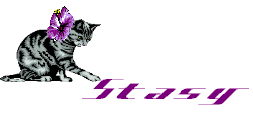


This release has a history that predates its creation.
Since the 1970s, Pete Townsend (yes, the Pete Townsend from the Who) has been working on a grand project called "Lifehouse" that has evolved for four decades beyond any capability to produce.
Utilizing the conceptual underpinning first implemented in the Who's song "Baba O'Riley" (a track initially part of the original Lifehouse project) along with Lawrence Ball's own computerized compositional system called Harmonic Maths, Townsend, with Ball and programmer Dave Snowden, created a website called The Lifehouse Method. While active during 2007-08, the website offered users the ability to instantaneously create a customized piece of music, and during its run generated over 10.000 unique works based on the users' own individual characteristics and personal traits.
The release of Ball's Method Music presents the music that evolved from these tests conducted by Ball and Townsend.

LAWRENCE BALL: Method Music (double CD on Navona Records)
This CD from 2011 features 118 minutes of modern electronic music.
Disc 1 ("Imaginary Sitters") features tracks utilizing melodic streams woven together on a computer with sequencing. This analytical description doesn't do justice to the result, though. None of it sounds artificial or contrived. These tracks exude a palpable buoyancy. The pace is often frenetic, at times almost dancefloor fare. Complex patterns unfurl and cycle while auxiliary threads lend depth and character.
Ignoring the source process and concentrating wholly on what the listener hears: the instrumentation is mainly keyboards with periodic occurrences of percussion. Sometimes the keys adopt orchestral traits. The arrangements are often very reminiscent of Philip Glass, but frequently tinged with more modern sentiments.
These pieces are agile and engaging. The notes cascade forth at a rapid rate, imbuing the tunes with a high energy quotient. Complex chords intertwine to create lavish tapestries seething with animation. A variety of sounds are employed to prevent any uniformity from song to song. In the end, these pieces convey a distinct joviality, a celebration of mind and machine refined by Ball's talent.
On disc 2 ("Imaginary Galaxies") the music is presented in a more sedate, ambient manner. There are three 20 minute tracks.
Track one is "for the late Syd Barrett." Languid pulsations are stretched to near-infinite duration and allowed to breathe, while auxiliary textures sway through the vaporous mix. Bell-tones intermittently punctuate the piece.
Track two is "for the late Hugh Hopper." Here, tonalities waver with a tenuous carousel resonance, while sharp keys mark out embellishment in a luxurious fashion. Orchestral touches wander through the piece, lending a cerebral temperament to the minimal structure, which is accented by a pensive piano.
Track three is "for the late Gyorgy Ligeti." In all honesty, this track offers a more modern chamber music posture than an ambient attitude. The sounds are orchestral and waft on gentle breezes powered by sighing oboes and pacific strings. Piano contributes a dramatic enhancement to the softly beautiful composition.
Together, both discs offer a well-rounded sonic excursion into two extremes of the electronic genre: peppy tuneage and ambient soundscapes. Both are handled with skillful mastery and will delight fans of either style.

| Entire page © 2012 Matt Howarth. All rights reserved. |
Webpage design by
 |